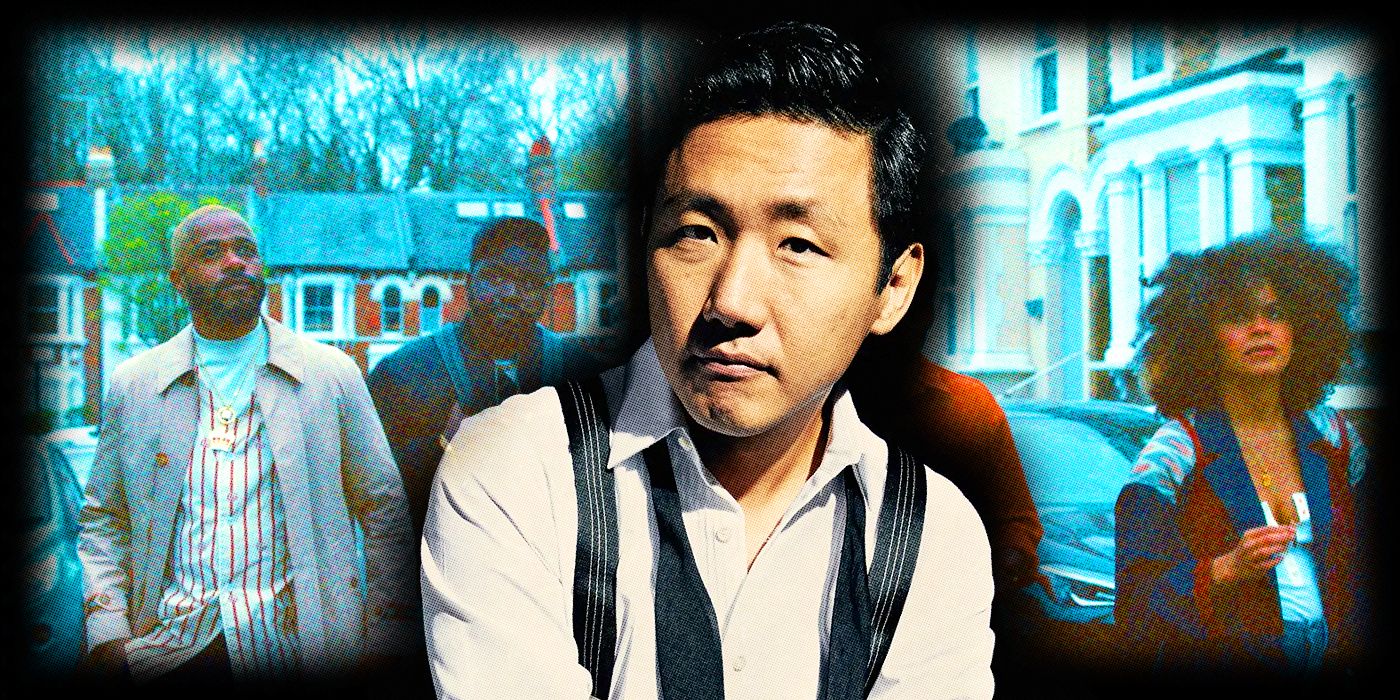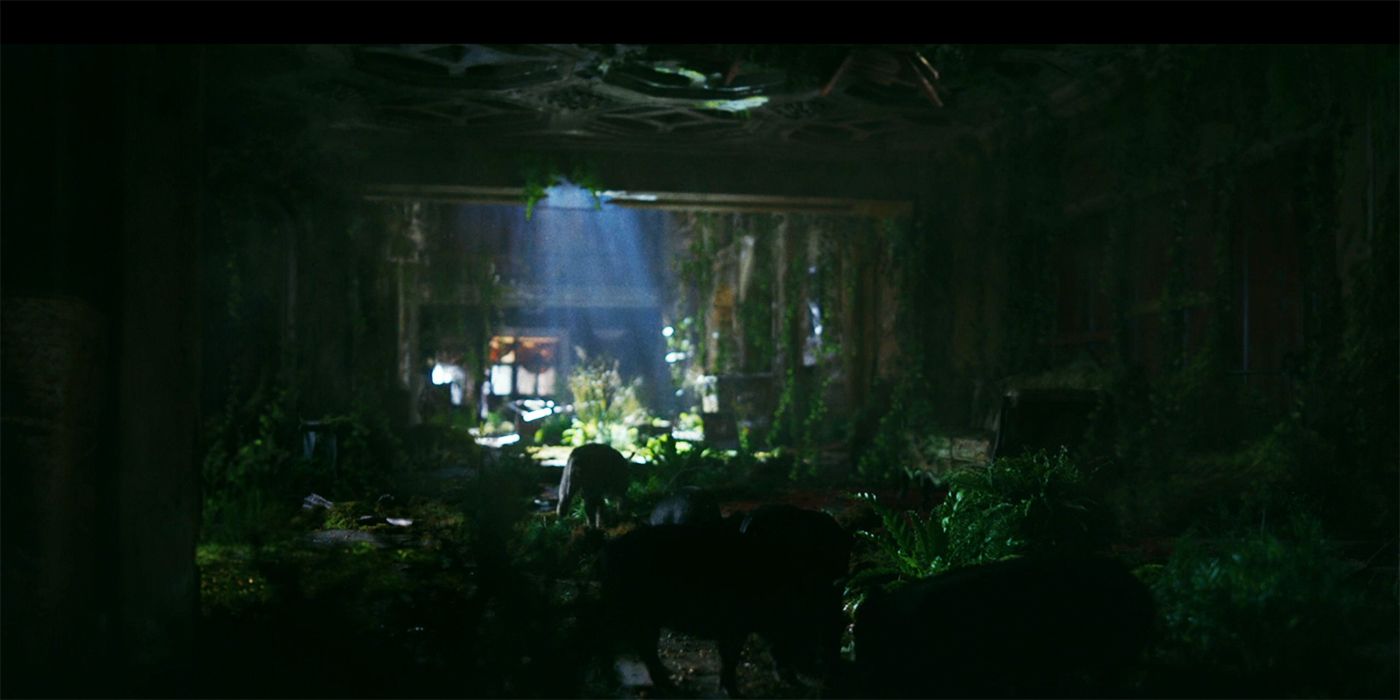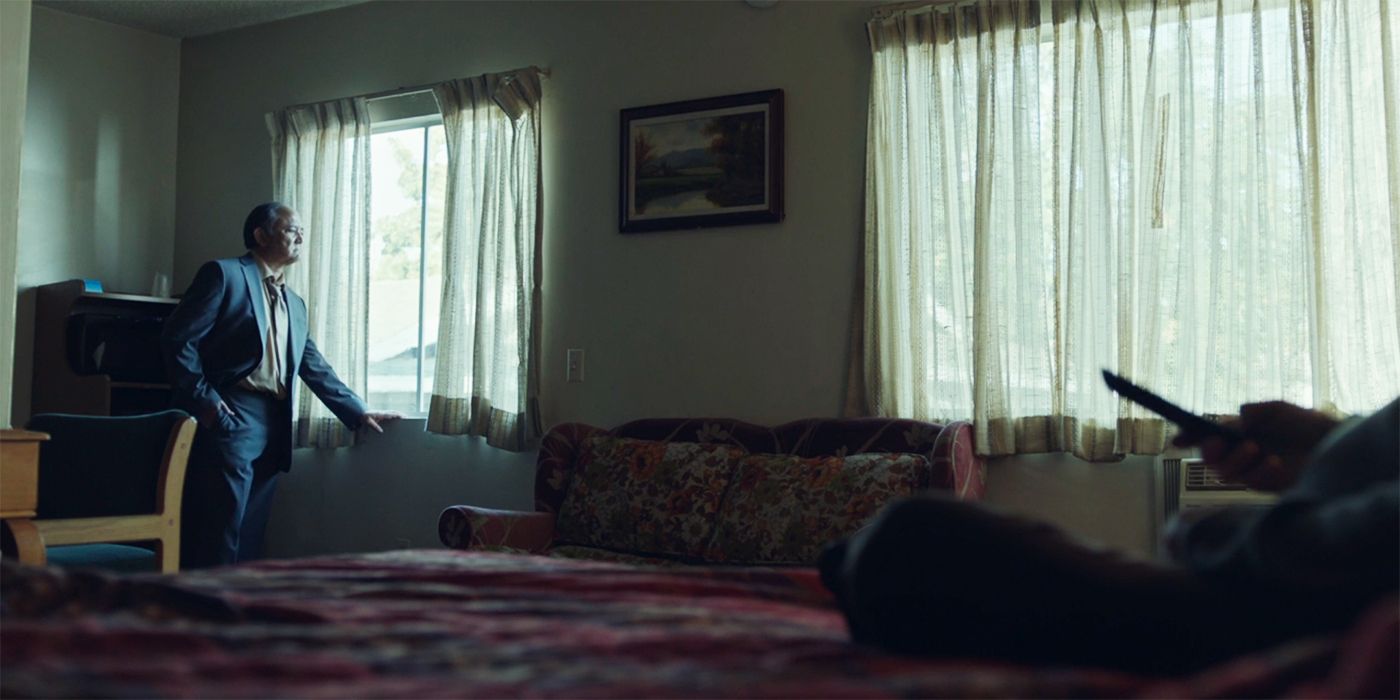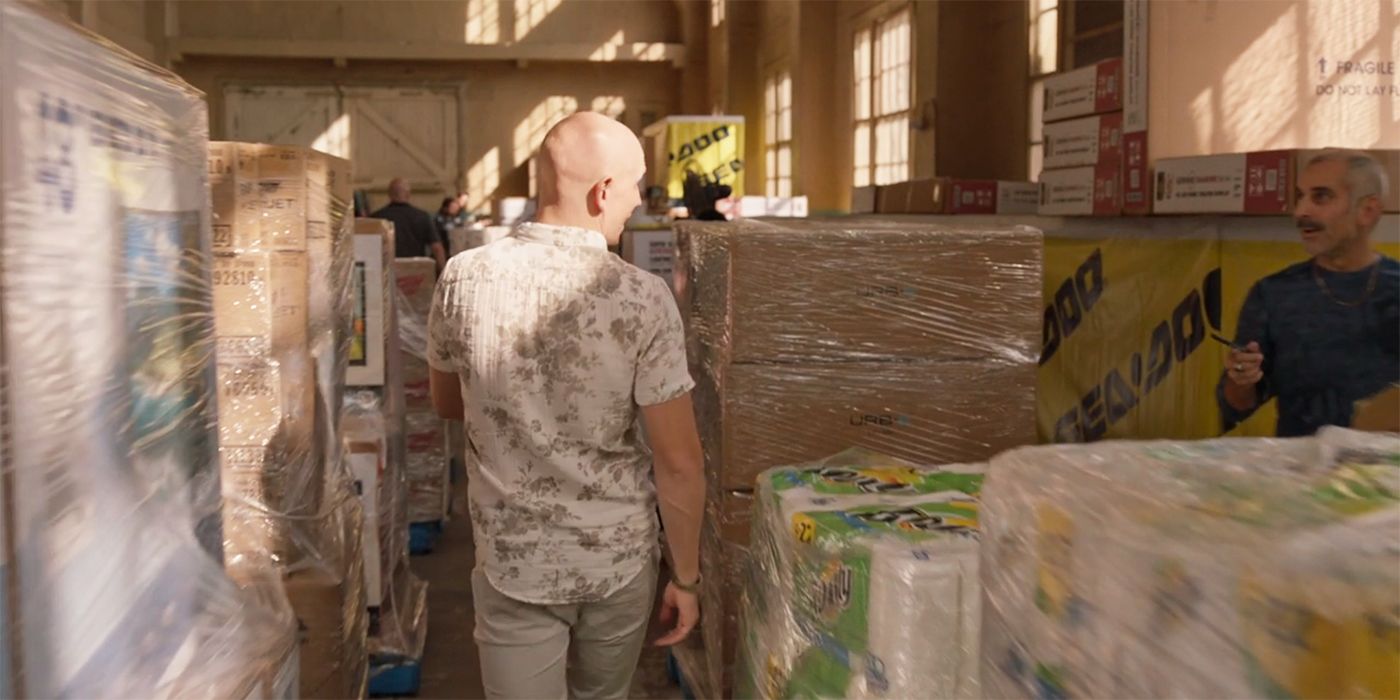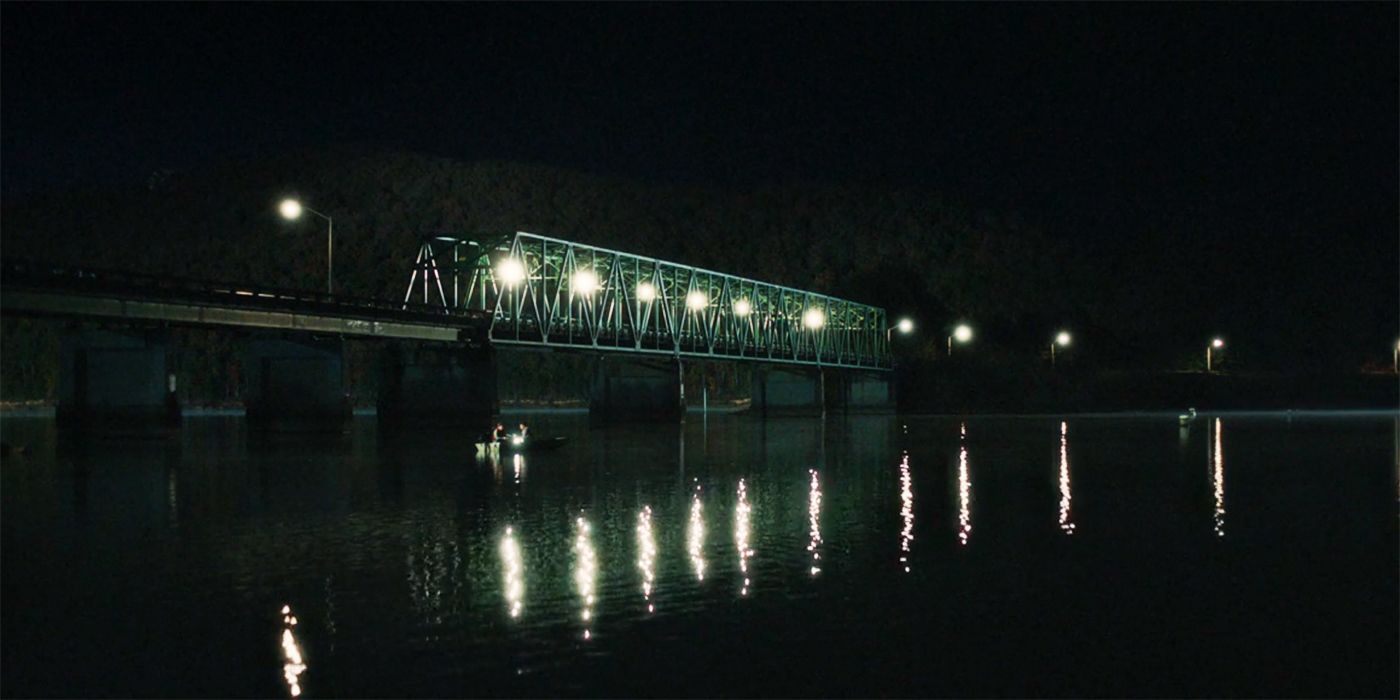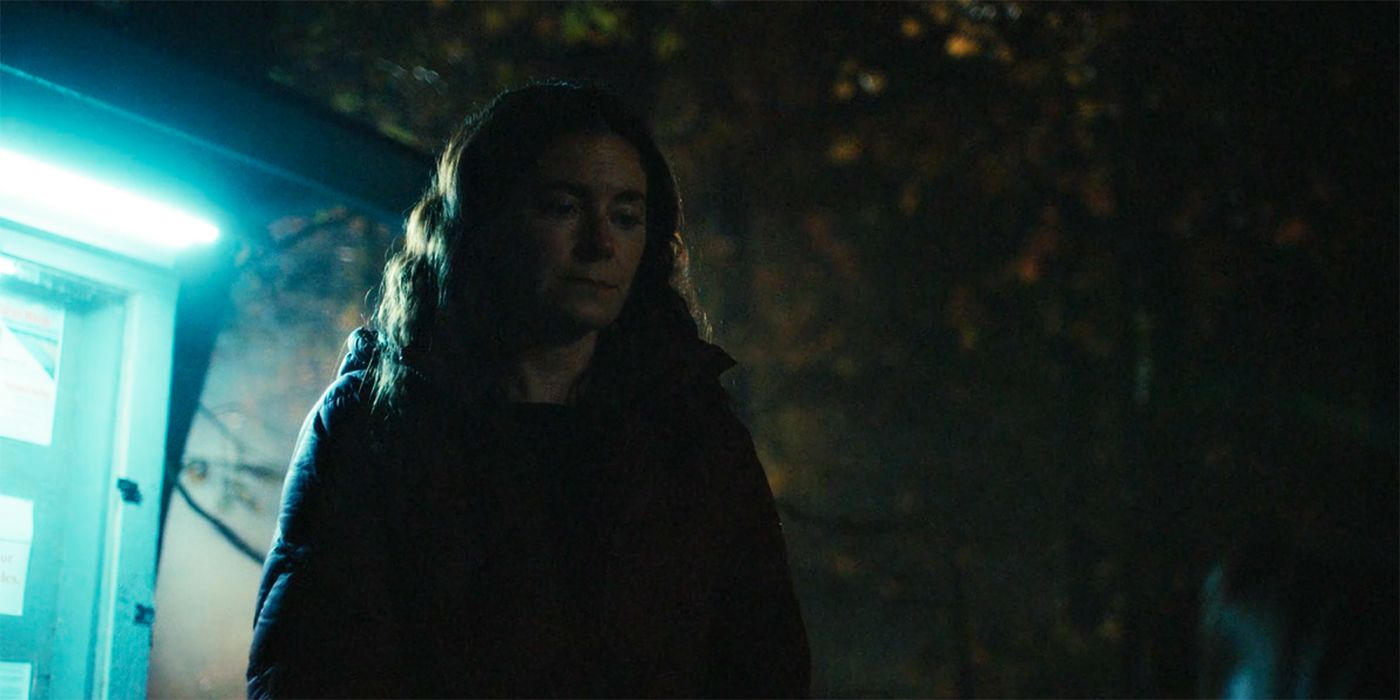Television director Hiro Murai has a knack for creating shows that feel cinematic. Whether directing a comedy or drama, his love of high-contrast visuals, gallows humor, and evocative camera movement elevate any script to a whole new level. Hallmarks of Murai's style include aerial shots, smooth camera movement, and auditory crescendos that amp up a sequence's tension. He's a master when it comes to encasing a shot in darkness, drawing the viewer's eye to a particular focal point. To further understand how Murai achieves his enviable style, this article will examine 3 unique season premieres directed by Murai and describe how he made each of them exemplary.
Creeping Dread & Framing in Station Eleven
The premiere episode of HBO Max miniseries Station Eleven, "Wheel of Fire," is a masterclass in Murai's style. Even in spite of the bleakness of Station Eleven's subject matter, a deadly pandemic, Murai finds ways to incorporate dark comedy and ironic music choices. Like in a majority of Murai's work, there are moments where a majority of the screen is black and only a sliver of an image is visible. Murai also obscures a few shots in "Wheel of Fire" with objects in the foreground, a choice that provides an added bit of voyeurism and mystery. Most commendably, "Wheel of Fire" has Murai's stylish framing and aerial shots, which combine to form a truly beautiful episode of television.
The episode begins with wild boars snuffling around the inside of a plant-covered building in a scene reminiscent of video game (and upcoming HBO series) The Last of Us. Here the viewer sees stunning opening images that quickly convey story. The high-contrast visuals connote both tragedy and mystery. The building overrun with plant life suggests that this place has been abandoned for long enough that nature has reclaimed it. When the viewer sees a Playbill magazine with character Arthur Leander (Gael García Bernal) on the cover, it becomes clear that this is a destroyed version of our world. Creeping camera movement and shots surrounded or bisected by darkness are accompanied by a crescendo of insects chirping, further instilling dread. This is a vision of Earth's apocalyptic future, established without dialogue in a few skillful shots.
The next scene presents a theater shrouded in darkness. The viewer's eyes are naturally drawn to the rectangle of white and blue light onstage, where the actors are performing Shakespeare. Bernal's Arthur takes center stage, yet his face is masked by shadows, a detail that foreshadows his demise. Arthur collapses from a heart attack mid-performance, and an audience member, Jeevan (Himesh Patel) rushes onstage to help, soon realizing he is ill-equipped to save Arthur. The subtle camera movement, watchful eyes of extras, and suspenseful music allow the viewer to feel Jeevan's anxiety. Prop snow falls as Arthur suffers, creating an additional sense of death and decay. Blocks of darkness frame Jeevan, obscuring his face yet still suggesting the mixture of inadequacy and concern that he's feeling. As a doctor defibrillates Arthur, Murai chooses an overhead shot of the scene which slowly rotates above the action, as if following the journey of a spirit to the heavens.
Voyeurism and Moving Cameras in Barry
Murai plays with obscuring action and voyeurism in his directorial style, often limiting what the viewer can see to give them the sensation of peeking behind closed doors. This can be done to create tension, as it is often done in Station Eleven, or it can be used for comedic purposes like it is on HBO's Barry. In the Murai-directed second season premiere, "The Show Must Go On, Probably?", the first scene makes the viewer feel like an outsider struggling to get a better look at the proceedings. This is a canny way of making the viewer immediately invested. Not only are they curious to understand where the story is headed this season, they also have to unpack who all these new characters are while only being given a sliver of a glimpse.
Murai begins this scene by showing an apartment door. The camera pulls back to reveal a loaded gun aimed squarely in the door's direction. The person aiming the gun knocks, ready to shoot whoever answers. At first we cannot see the apartment resident, but we can hear him arguing with his friend about who gets to control the TV. When the man answers the door, his head is turned away, still facing the person he is arguing with, which prevents him from noticing the gun pointed squarely at him. Oblivious to the danger he's in, the man closes the door slightly, making it harder for the viewer to see him, and continues arguing about the TV. He swings the door open once more, signaling that he might finally notice the gun, only to halfway close it again, still engaged in his petty disagreement. This immediate double-beat of the gag is hilarious and creates a bit of ridiculous tension, nearly forcing the viewer to shout at their own television, "Stop talking and look at the gun!" When the man finally does notice the gun, the gunman responds by blasting him dead.
In the scene that follows, we get a fantastic bit of framing from Murai, who is still in the mood to play with audience expectations and voyeurism. Though recurring character Fuches (Stephen Root) is speaking, Murai has him framed so that he is predominantly off-screen with only his arm and leg visible. The windows in the room create a pair of diagonal lines that draw the viewer's eye toward another new character, Fuches's client, who is gazing out the window at something the viewer cannot see. The room is dark aside from the client, who has daylight shining upon him through the open curtains. His relative brightness seems to be another indication of Murai using light and dark to represent a character's morality. Unlike Fuches the client has a conscience and is horrified at the suggestion of murder. The conversation is interrupted by a crescendo of police sirens as the gunman from the previous scene knocks at their door. Here the viewer receives the third beat of the earlier door gag. When Fuches answers the door, the gunman is shot by off-screen police officers. In response, Fuches closes the door on the dying man, as if what happens on the other side is not his problem.
Murai's love of camera movement and shots that follow traveling subjects is on display in this episode as well, with a shot set to upbeat music that follows a high-spirited NoHo Hank (Anthony Carrigan) as he strolls through a warehouse full of gang members. In a series of crossfades, Murai presents Hank's newly pleasant life of crime. Hank is especially happy about Cristobal, a fellow gang leader whom he admires greatly. The camera moves smoothly and gently as Cristobal gives a crime-focused motivational speech to the gang members, then fades to a shot of the gang members enjoying a family dinner, while a kidnapped chef stares vacantly into space. Here we see Murai using pop music to create a lighthearted vibe in a dangerous situation, a tactic he uses frequently in his work to great comedic effect. The crossfades continue to a Top Gun-esque volleyball game among the gang members, followed by Hank typing up his thoughts in bed like a middle school girl writing a diary entry. Though Murai often deals with darker subject matter, here we see how his stylishness is used to great effect in Barry's broader, brighter moments as well.
Black & White as Metaphors in Atlanta
Murai directed a vast majority of Atlanta's episodes, and as a result, the show's iconic style is a hybrid of his unique visual acumen and Donald Glover's brilliant blend of comedy and social commentary. The third season opener, "Three Slaps," is particularly cinematic, as it looks notably polished and functions (like a few of season 3's episodes) as a standalone story focused on characters outside the show's main cast. The episode's opening scene begins in typical Murai fashion with a high-contrast aerial shot that sweeps from a highway to a lake where only a lantern-lit boat is visible.
Two fishermen, one named Black and the other named White, are night fishing while discussing the supposedly haunted town beneath the water. Murai provides a beautiful extreme long shot of the two fisherman in the darkness with a lit bridge overhead. As White uses the tale of the flooded city as a metaphor for how whiteness can make a person blind, he turns away from Black, and the light around each man dims, replaced by darkness. Each figure is cloaked in shadows until White finally turns, revealing a pallid ghostlike visage with missing eyes. Murai provides lighting cues and framing that accentuate the metaphor in Stephen Glover's script, revealing that racial oppression and violence are the ghost story still haunting America in modern times.
In the episode's main story, a boy named Loquareeous (Christopher Farrar) realizes that his new adoptive parents Amber (Laura Dreyfuss) and Gayle (Jamie Neumann) are up to something sinister. Amber claims that the whole family is headed to the Grand Canyon on a family trip, but in truth, Amber and Gayle are plotting to kill themselves and their adopted children by plunging their minivan into the river. Parked around the corner from the aforementioned bridge, Loquareeous watches as the couple walks literally and metaphorically toward the darkness, illuminated only by the lights of a nearby bulletin board.
This shot is classic Murai, as only a fraction of the scene is lit or visible, yet the emotional and narrative impact are fully realized. Gayle, mostly in darkness with the light at her back, tries to convince Amber that a murder-suicide plot is the best step forward for their adopted children. Amber, weeping, her face lit in melancholy blue, moans, "Why didn't anyone stop us?" Once again Murai's lighting is cutting to the heart of the story's morality, visibly showing us the battle between light and darkness. When Loquareeous finally escapes from his adoptive parents, he follows the bridge lights back toward his childhood home, and Murai crossfades into daylight.
Directing Your Attention
Murai's skillful framing directs the viewer's eyes to slivers of light. He bisects space with blocks of darkness and places objects in the foreground to give viewers the sensation of voyeurism. His aerial shots and camera movement are reminiscent of directors like Alfonso Cuarón and Clint Eastwood, which brings an elevated quality to every show he directs. Even while accomplishing visual tricks that others could only dream of, he adds on another dimension of skill by infusing his shots with comedy via impeccably selected music cues delivering bittersweet irony. The result is television that feels better and more impressive than typical fare, bringing the feeling of cinema directly to the viewer's home.

